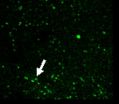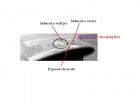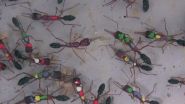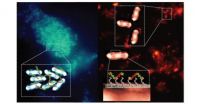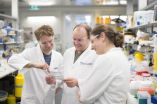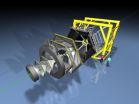(Press-News.org) Researchers have identified several target molecules which are suitable for the development of new allergy drugs. The Journal of Allergy and Clinical Immunology, the most prestigious journal in the field of allergology, has recently published an extensive review article on the prospects of drug therapy for allergy. Completed in a large-scale EU project, the lead author of the review article is Professor Ilkka Harvima of the University of Eastern Finland and Kuopio University Hospital.
Immediate allergic reactions and allergic diseases such as allergic rhinitis, asthma and urticaria are extremely widespread in the population. Traditionally, drug therapy for allergy is based on the use of non-sedative antihistamines, i.e. blocking of the histamine H1 receptors, but sometimes additional help is obtained from blockers of the cysteinyl leukotriene receptor-1.
Antihistamines seek to prevent allergic symptoms caused by histamine released by mast cells. Mast cells, also known as "allergy cells", are cells of the immune system which become activated by environmental allergens.
"However, even high doses of H1 antihistamine drugs aren't enough to alleviate the symptoms of some patients. This is understandable, as when the mast cell becomes activated, several other strong mediators besides histamine get released, too. Histamine can also affect other receptors of the cell surface than the H1 receptor," Professor Harvima explains.
Over the past years, researchers have identified several mast cell molecules which can be targets of new drugs. Several of these have already proceeded to clinical trials. These targets include, for example, serine proteinases tryptase, chymase, cathepsin G, which are enzymes that break down proteins, as well as 5-lipoxygenase-activating protein FLAP, 15-lipoxygenase-1, prostaglandin-D2, and proinflammatory cytokines such as TNF-alpha, IL-4, IL-6 and IL-17. New drugs targeting the histamine H4 receptor are also undergoing clinical trials. In the near future, it is possible that drug therapy for allergy is a combination of H1 and H4 receptor blockers.
Several target molecules have also been identified in intracellular signalling pathways and in cell survival proteins. Inhibiting these molecules can lead to the prevention of activation of the cell and to the prevention of mediator release. Various receptors which can either activate or inhibit the cell have been identified on cell surface. Different drug molecules make it possible to affect the function of these receptors and, consequently, to prevent cell activation and mediator release.
INFORMATION:
The Mast Cells and Basophiles: Targets for Innovative Therapies project, funded by COST funding BM1007 of the EU, brings together European experts focusing on the identification of new target molecules for drug development, including allergy drugs. The University of Eastern Finland and Kuopio University Hospital were represented in the project by Professor Harvima, who is also the lead author of the review article.
For further information, please contact:
Professor Ilkka Harvima, ilkka.harvima (at) kuh.fi, tel. +358447172875
Drug therapy for allergy moves forward
2014-05-12
ELSE PRESS RELEASES FROM THIS DATE:
Role of pro-urokinase in neuronal apoptosis and revascularization after ACI
2014-05-12
Among the drugs used for acute ischemic stroke, recombinant tissue plasminogen activator is widely accepted internationally. In China, urokinase has been widely used for thrombolysis after acute ischemic stroke. Pro-urokinase is the precursor of urokinase. Compared with urokinase, pro-urokinase has greater ability to dissolve thrombus and is safer to use. However, most countries do not recognize urokinase for thrombolytic treatment after acute ischemic stroke, which has not been approved for clinical use. Dr. Wenli Hu and team from Beijing Chao-Yang Hospital, Capital Medical ...
Unusual neural connection between injured cingulum and brainstem in a SAH patients
2014-05-12
The cingulum is an important pathway for cholinergic innervation for the cerebral cortex. Many studies have reported connections between the cholinergic nuclei, especially between the cholinergic nuclei in the basal forebrain and those in the brainstem via the fornix and thalamus. However, little is known about the connection between cholinergic nuclei in the basal forebrain and cholinergic nuclei in the brainstem via the cingulum. Even no study on this phenomenon after cerebral hemorrhage has been reported. Dr. Sung Ho Jang and team from College of Medicine, Yeungnam University ...
Molecular regulation of hypoxic-ischemic brain damage
2014-05-12
Oligodendrocyte lineage gene 1 (Olig1) plays a key role in hypoxic-ischemic brain damage and myelin repair. miRNA-9 is involved in the occurrence of many related neurological disorders. Bioinformatics analysis demonstrated that miRNA-9 complementarily, but incompletely, bound oligodendrocyte lineage gene 1, but whether miRNA-9 regulates oligodendrocyte lineage gene 1 remains poorly understood. Dr. Lijun Yang and co-workers from Beijing Friendship Hospital, Capital Medical University in China prepared whole brain slices from a rat model of oxygen-glucose deprivation and ...
Unmanned air vehicle flow separation control using dielectric barrier discharge plasma at high wind
2014-05-12
Plasma technology based on Dielectric Barrier Discharge (DBD) has been widely demonstrated to be a novel active flow control method. In order to make the plasma flow control technology more practical, the plasma authority must be improved at high wind speed. Dr. ZHANG Xin and his group from School of Aeronautic, Northwestern Polytechnical University set out to tackle this problem. After 2-years of innovative research, they have developed a novel plasma actuator to improve the plasma authority at high wind speed. They found that the novel plasma actuator acting on the surface ...
Dopamine turns worker ants into warrior queens
2014-05-12
VIDEO:
When an H. saltator colony's queen dies, the female workers engage in ritual fights to establish dominance. Ultimately, a small group of workers establishes dominance and become a cadre of...
Click here for more information.
The ritualized fighting behavior of one ant species is linked to increases in dopamine levels that trigger dramatic physical changes in the ants without affecting their DNA, according to research from North Carolina State University, Arizona State ...
Major breakthrough in understanding Prader-Willi Syndrome, a parental imprinting disorder
2014-05-12
Scientists at the Hebrew University of Jerusalem have reported a major breakthrough in understanding the molecular basis for Prader-Willi syndrome (PWS), perhaps the most studied among the class of diseases that involves defects in parental imprinting.
The work, described in the latest online edition of the prestigious journal Nature Genetics, was led by Prof. Nissim Benvenisty, the Herbert Cohn Professor of Cancer Research and director of the Stem Cell Unit at the Alexander Silberman Institute of Life Sciences at the Hebrew University; and his PhD student Yonatan Stelzer. ...
Hijacking bacteria's natural defenses to trap and reveal pathogens
2014-05-12
The breakthrough, published in the journal Nature Materials, could offer an easier way of detecting pathogenic bacteria outside of a clinical setting and could be particularly important for the developing world, where access to more sophisticated laboratory techniques is often limited.
The research was led by Professor Cameron Alexander, Head of the Division of Drug Delivery and Tissue Engineering and EPSRC Leadership Fellow in the University's School of Pharmacy, building on work by PhD student Peter Magennis. Professor Alexander said: "Essentially, we have hijacked ...
Revealed:Protein's role in preventing heart muscle growth leading to heart failure
2014-05-12
Cardiovascular disease remains the number one cause of death in the Western world, with heart failure representing the fastest-growing subclass over the past decade. The stage that precedes heart failure in a significant number of cardiovascular diseases is pathological hypertrophy — the growth of the heart muscle in an attempt to increase its output.
Not all hypertrophy is pathological; for example, during pregnancy or high physical exertion, the muscle of the heart grows but myocardial function remains normal. But when hypertrophy is excessive, prolonged and unbalanced, ...
Link found between cell death and inflammatory disease
2014-05-12
A team of Melbourne researchers has shown a recently discovered type of cell death called necroptosis could be the underlying cause of inflammatory disease.
The research team discovered that a previously identified molecule involved in necroptosis, called RIPK1, was essential for survival by preventing uncontrolled inflammation. This finding could lead to future treatments for inflammatory diseases including Crohn's disease, rheumatoid arthritis and psoriasis.
The researchers, from the Walter and Eliza Hall Institute, also discovered that the 'survival' molecule RIPK1 ...
HADES searches for dark matter
2014-05-12
Although Dark Energy and Dark Matter appear to constitute over 95 percent of the universe, nobody knows of which particles they are made up. Astrophysicists now crossed one potential Dark Matter candidate – the Dark Photon or U boson – off the list in top position. This is the result of recent HADES experiments, where researchers from the Helmholtz-Zentrum Dresden-Rossendorf (HZDR) and from 17 other European institutes try to pin down the nature of Dark Matter. These negative results – recently published in Physics Letters B – could even lead to challenges of the Standard ...

